Sensory assessment
The following figures illustrate the results of the sensory assessment of the treatments at both two and nine months post-bottling. Red and blue lines represent Ctrl and CS treatments respectively. Statistical differences (P value ≤0.05) by attribute are identified by **.
Initially, hot climate Shiraz wines without cold soak had greater dark berry aromas, palate length and tannin however these differences weren’t found after a total of nine months in bottle (Figure 1). Cool climate Shiraz showed no significant difference for any attributes over the two time periods (Figure 2).
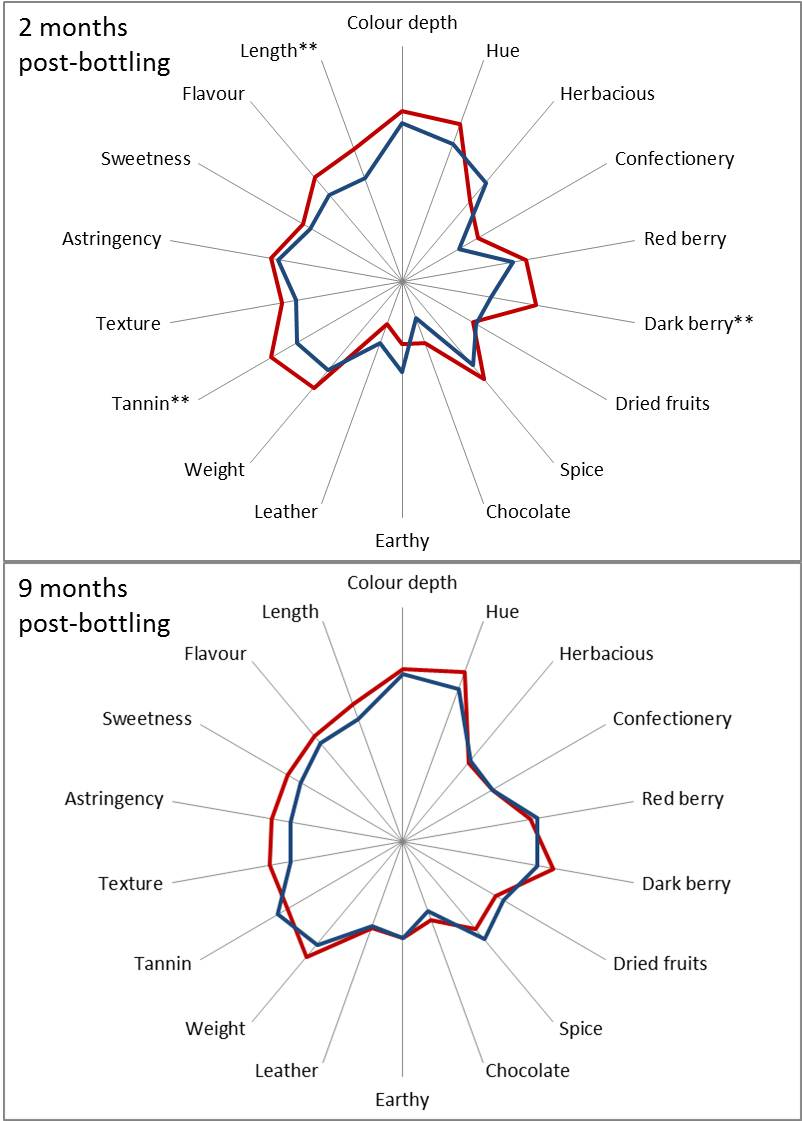
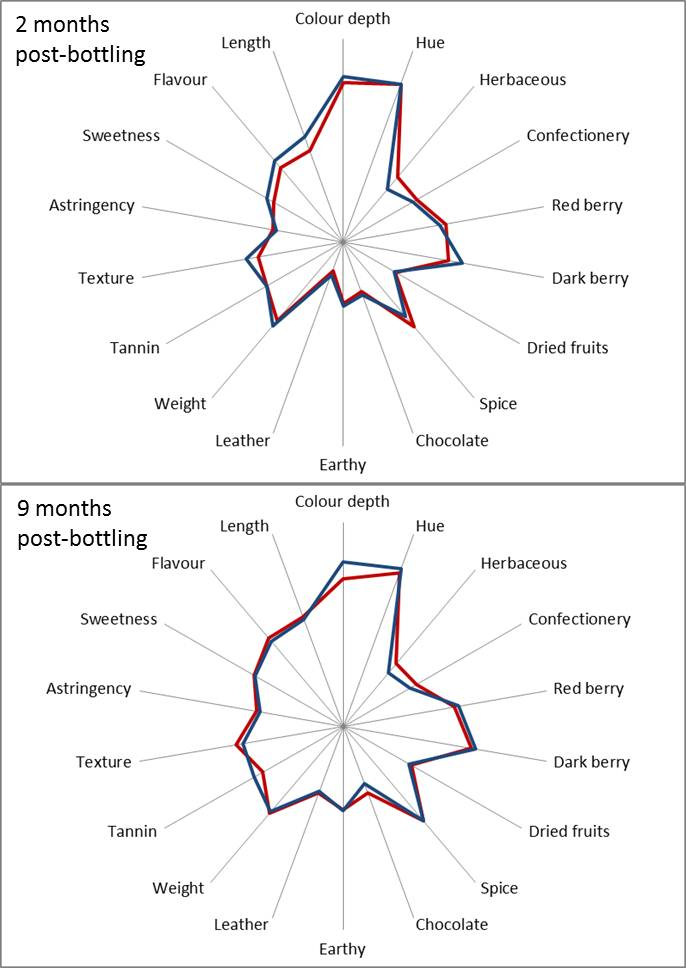
Sensory properties of the hot climate Cabernet were significantly influenced by the cold soak treatment with colour (depth and hue), aroma (chocolate) and palate (weight, texture and length) attributes enhanced by the cold soak and persistent over both sensory sessions (Figure 3).
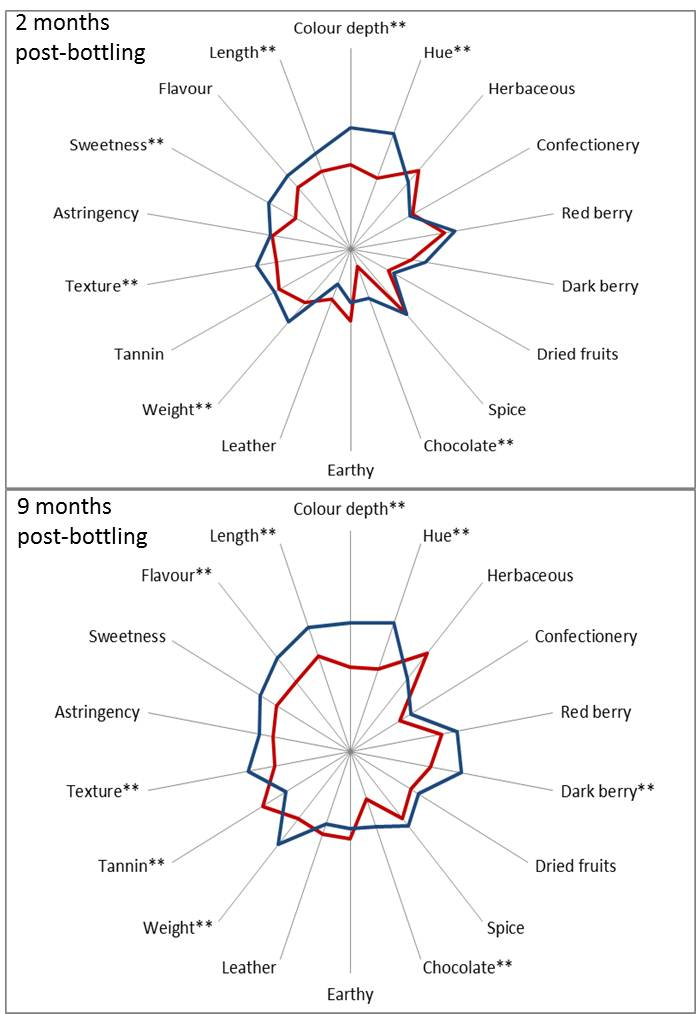
The only significant difference in cool climate Cabernet was CS hue being greater than Ctrl nine months post-bottling (Figure 4).
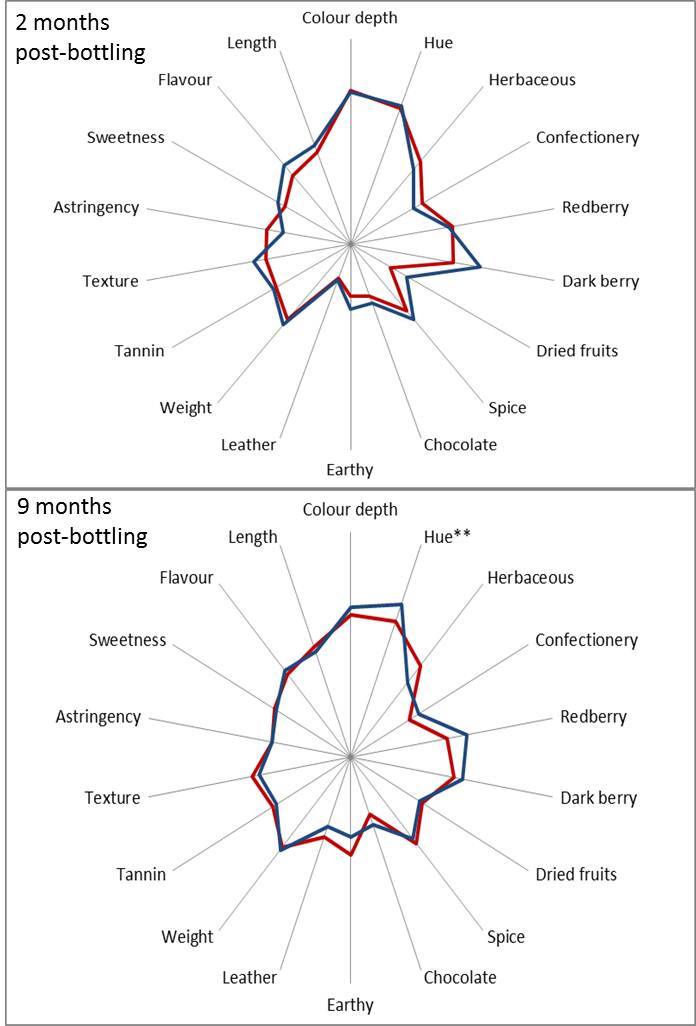
Hue in hot climate Merlot was consistently rated higher in the Ctrl over the two periods (Figure 5).
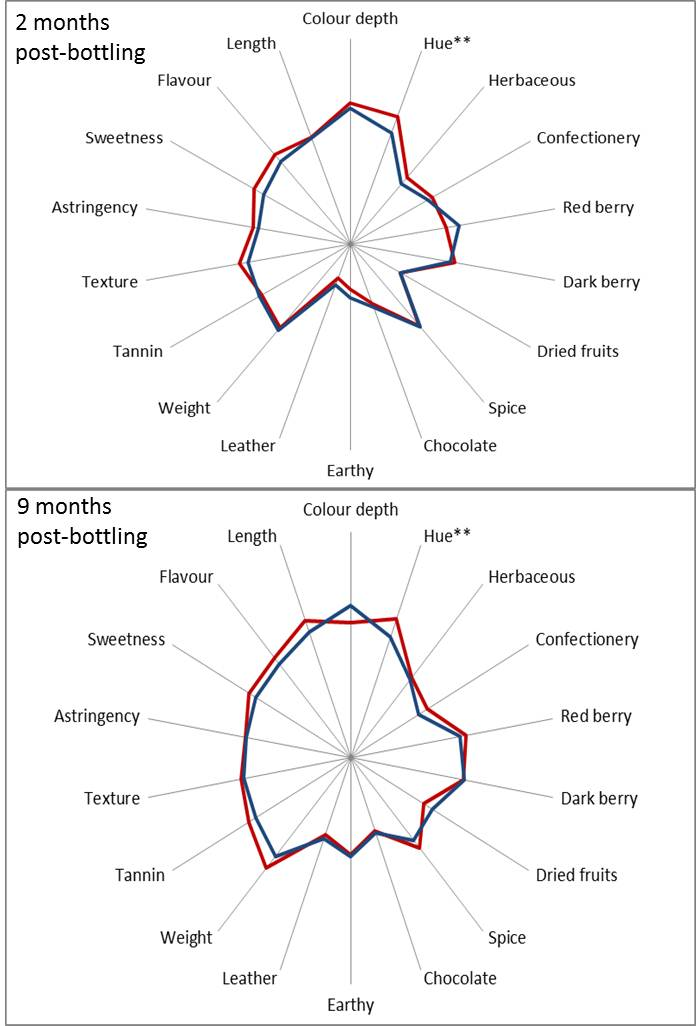
Cool climate Merlot showed stylistic differences initially with cold soak enhancing flavour and texture but less confectionery and red berry aromas than the control. These differences were not observed at nine months (Figure 6).
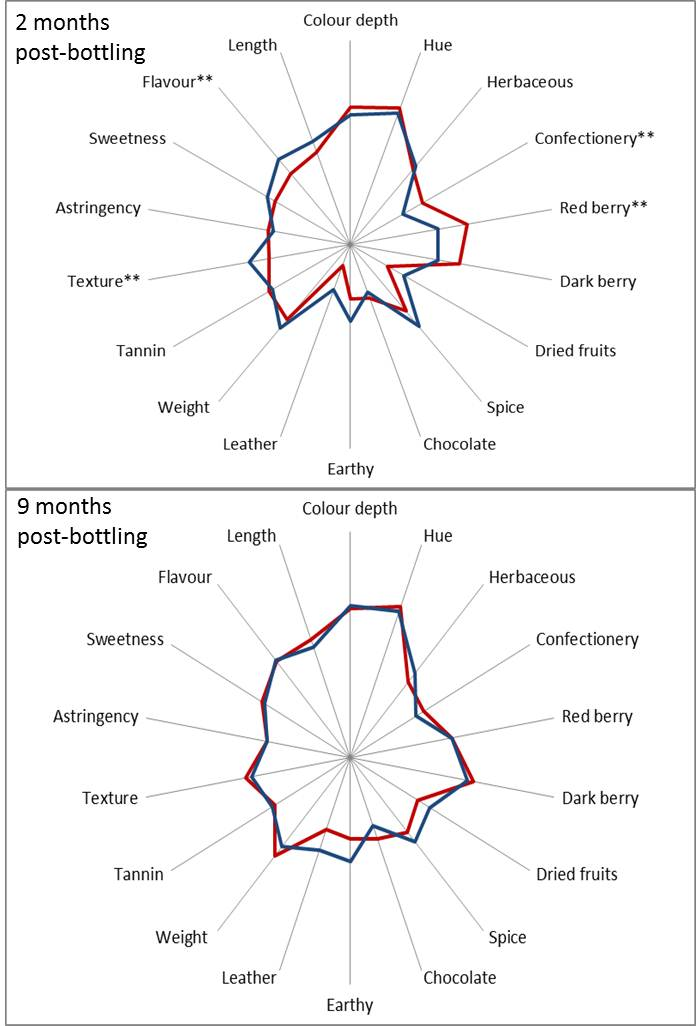
Findings from this study are limited to one growing season. To extend this trial for multiple seasons and increasing the number of replicates would provide additional confidence; replicating the trial on a commercial scale is also suggested.
Conclusion
Cold soak is not a ‘one size fits all’ technique and is more effectively utilised under specific conditions.
The quality of hot climate grown Cabernet greatly benefits from the application of a cold soak with improved colour and palate structure. Cool climate Cabernet had little change after a cold soak.
Shiraz did not respond positively to cold soaking regardless of climatic region in which the fruit was grown. The quality of hot climate wines was reduced when treated with a cold soak.
In terms of wine style, it was initially observed a cold soak on cool climate Merlot provided palate complexity compared to a fruit forward style without it, however, after nine months there were no sensory differences. The only descriptor that showed significant differences between treatments in the sensory assessment was colour.
This study has demonstrated that not all varieties react similarly to a cold soak and the climate in which the fruit has been grown can influence the impact of this technique. Winemakers should consider climate and variety when practicing this technique to avoid unnecessary inputs for little return on wine quality.
Acknowledgments
This study was carried out with the financial support from Australia’s grapegrowers and winemakers through their investment body, Wine Australia.
Thanks to Department of Agriculture and Food WA staff Andrew Taylor, Glynn Ward, Kristen Brodison, Karryn Reeves and Rebecca O’Leary for their valuable assistance.
